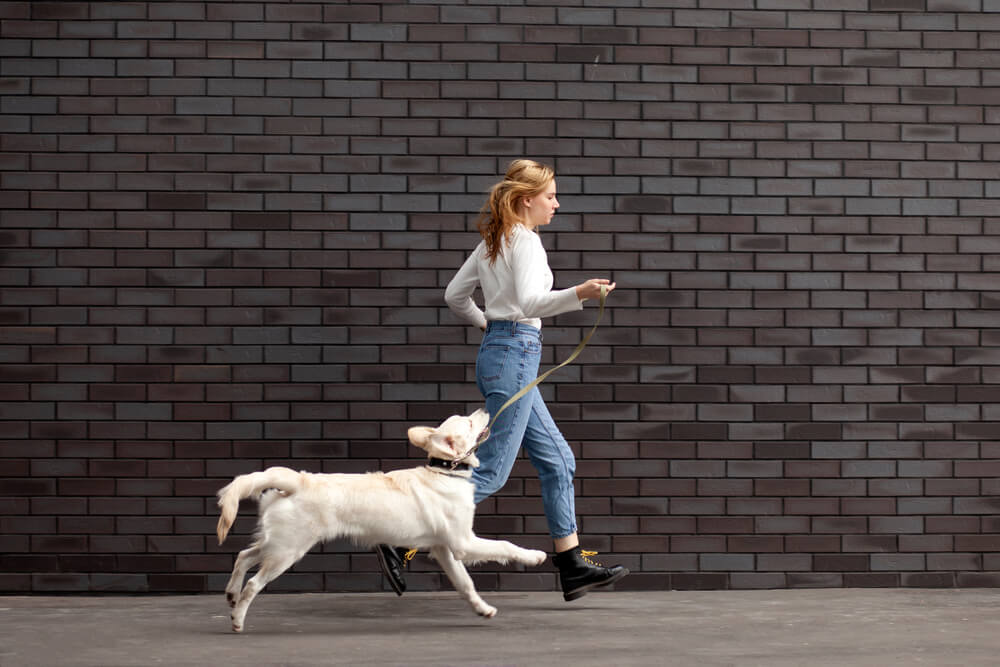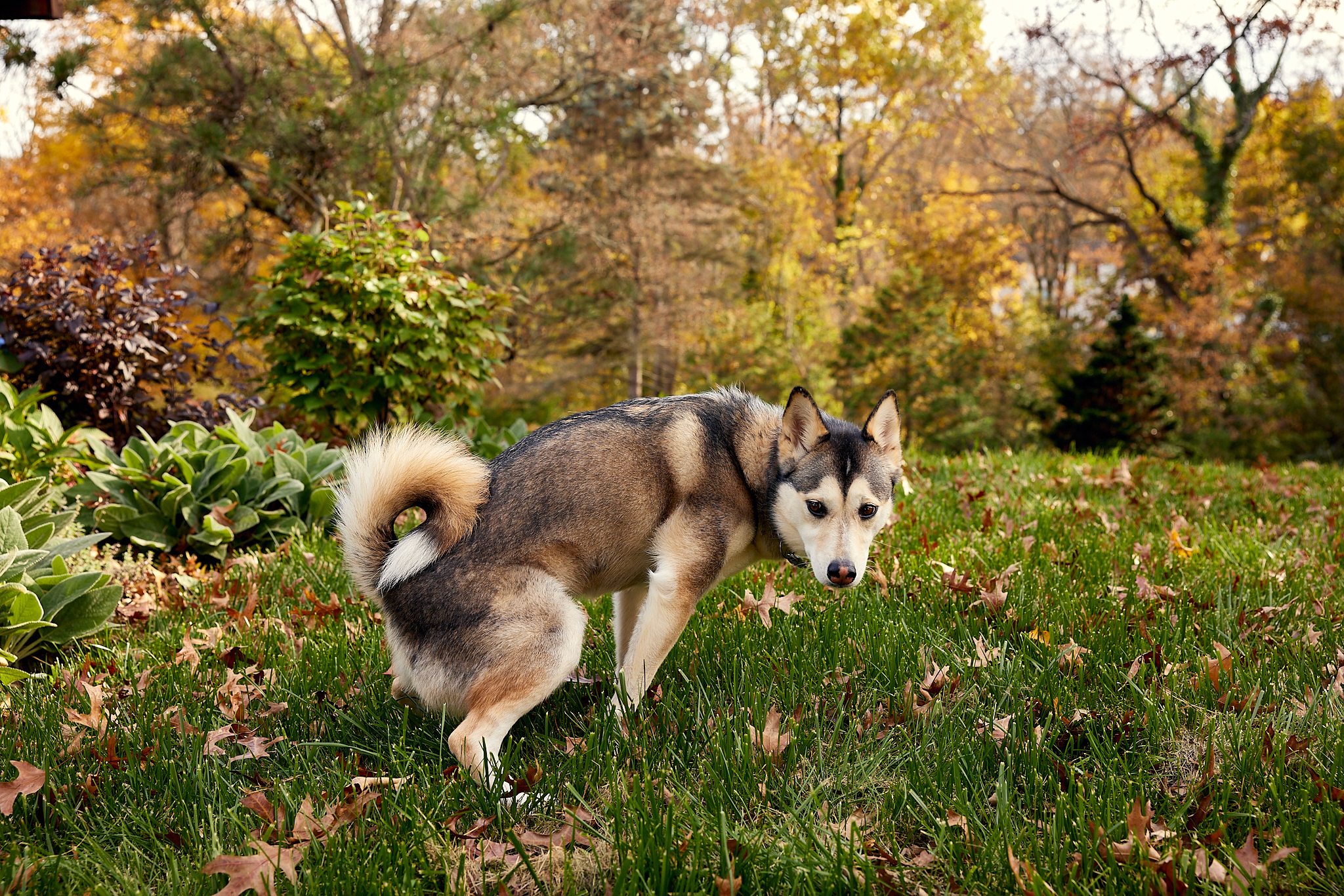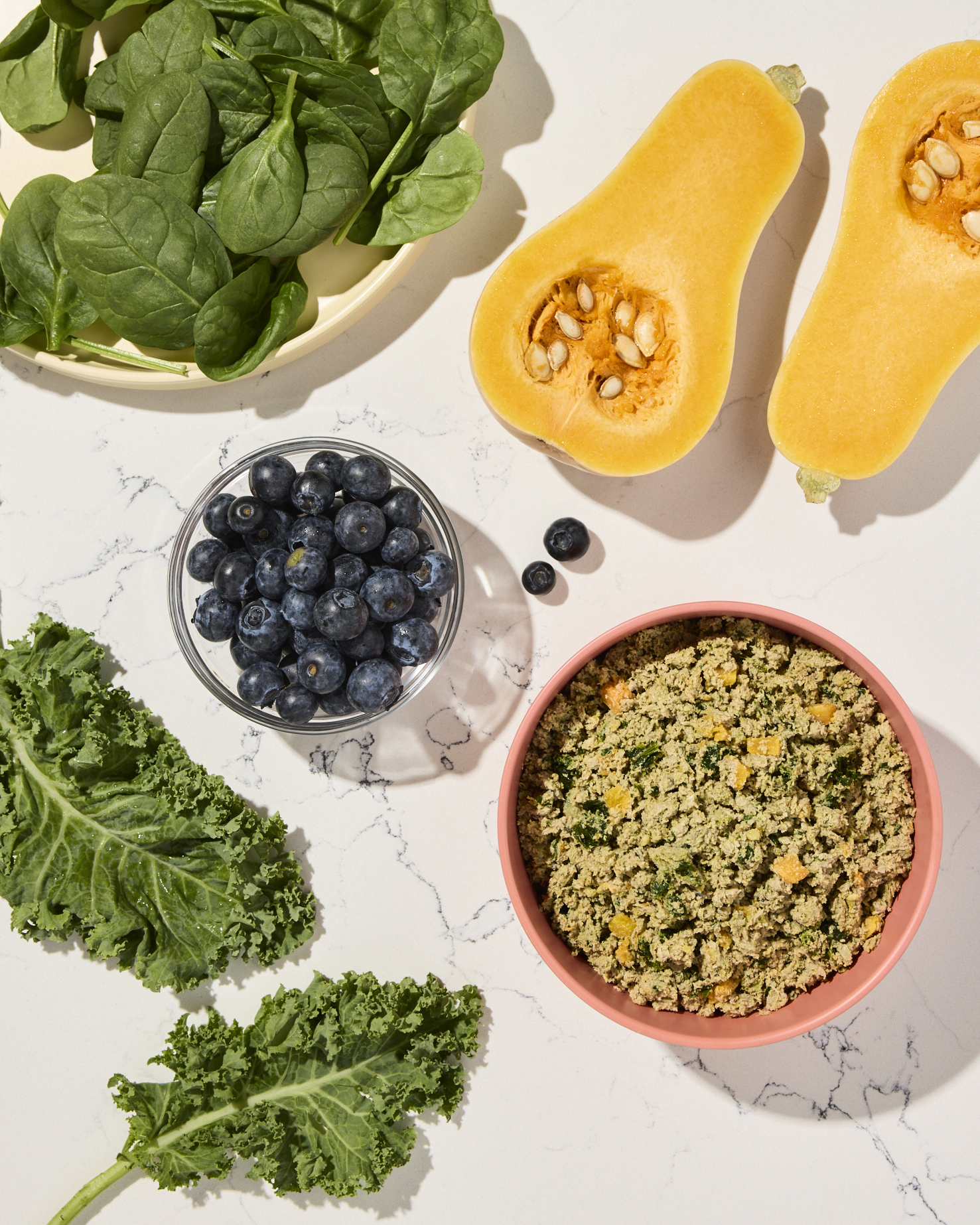Hey Ollie blog readers! We’re offering you an exclusive 60% OFF your starter box! Try now!
Exercise or extra fries? Whether you love it or hate it, if you have a dog you will likely be getting plenty of it! Walking for miles and hours of tossing the ball are probably regular occurrences in your home.
If you’re like most pet owners you may have wondered how much exercise your dog needs to be happy and healthy? This is especially true if you work a full-time job outside of your home. Are a walk in the morning and some ball or a long walk in the evening enough? Do you make it to the dog park on the weekends?
Like humans, the answer to this question isn’t so cut and dry, it will depend on a number of factors including your dog’s age, size, breed, and overall health. Exercise programs for dogs are not one size fits all.
It is important not to let your pup get too much exercise, but not enough can lead to health problems like obesity and diabetes or behavior problems like barking, chewing, or excessive digging.
Get On-Demand Analyses of Your Dog’s Health with Ollie Health Screenings

How do I know how much exercise my dog needs?
Let’s start with the basics, can your dog be calm and relax in your home, and are they at a healthy weight? You’re probably in the target range for your pup. Does your pup eat and sleep well? These are probably also good signs.
Exercise doesn’t always have to be purely physical. Mental exercise can be just as important and just as tiring. If you’re having trouble getting out and about or no matter how long you walk or run with your dog they’re never getting tired, consider adding some mental exercise to the mix.
Great mental exercises include nose work, tricks training, and puzzle toys, or other forms of enrichment where your pup works for treats. When using mental exercise your pup will usually tell you when they’ve had enough. Since your pup can’t talk you’ll need to look for some other tells like taking longer breaks or a lack of focus.
What determines my dog’s exercise needs?
Your Dog’s Age and Life Stage
- Puppies: Growing puppies need regular low-impact exercise on non-slip surfaces to protect their developing joints. This may include short leash walks (five minutes for every month of their age, once or twice daily), training sessions, or play with a favorite toy. Let your puppy set the time limit. Watch for signs of fatigue such as slowing down or losing focus, or overarousal behaviors such as nipping.
- Adult Dogs: Adult dogs typically need 30 minutes to two hours of daily exercise depending on their breed, size, and energy level. In addition to traditional walks, physically fit adult dogs can enjoy more vigorous activities that promote greater overall health and cardiovascular fitness such as jogging, hiking, fetch, agility, swimming, and off-leash running in a secure area.
- Senior Dogs: Aging dogs need regular gentle exercise such as controlled leash walks, swimming, or hiking on easy trails to keep their joints flexible and their muscles strong. Regular low-impact exercise can slow arthritis progression, prevent harmful weight gain, and may reduce your dog’s risk of cognitive decline. Consult your veterinarian to determine which exercise type and frequency is safe for your golden oldie.
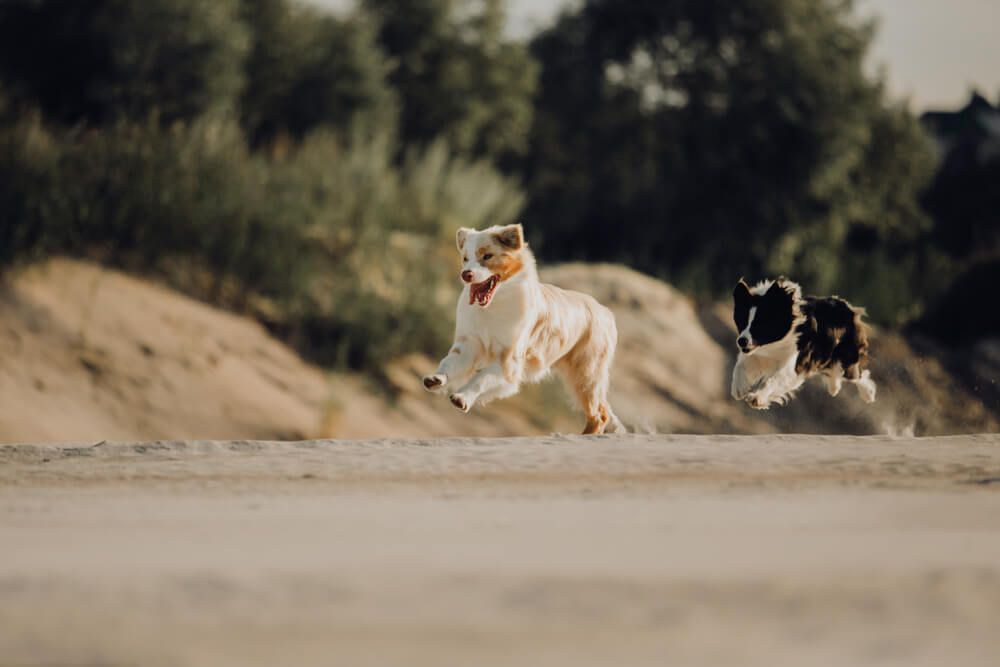
What dog breeds need the most exercise?
While there are always exceptions to the rule the breeds listed below generally require higher amounts of exercise. If you are working with a breeder or breed-specific rescue, you may find that they require a fenced yard or a certain amount of space before they will allow you to purchase or adopt one of their dogs. This means that if you live in the city or an apartment building it may be more difficult to acquire one of these breeds. In some cases, dogs are surrendered to rescue because the first owner did not understand their exercise needs.
Learn About Less Active Breeds Ideal for Apartment Living
If you’re unsure about a dog’s exercise needs, ask the breeder, rescue, or current foster for their recommendations and information about the dog’s current exercise routine.
Breeds that need a lot of exercise include:
- Border Collies
- Blue Heelers
- Great Pyrenees
- German Shepherds
- Australian Shepherds
- Australian Cattle Dogs
- Rhodesian Ridgebacks
- Golden Retrievers
- Labrador Retrievers
- Dalmatians
- Jack Russell Terriers
- Irish Setters
- Catahoulas
- Boston Terriers
- Boxers
- Pointers
Many of these breeds including Great Pyrenees and border collies are bred to work. Great Pyrenees are often used to protect sheep, goats, and even cows. Border collies are excellent herding dogs. However, if you live in a sheep-free suburb, you will need to help your pup find another job to keep them mentally and physically strong. Without appropriate activities, these dogs may apply their energy to unwanted behaviors such as destroying your favorite couch or digging up your lawn.
Discover the 10 Most Athletic Dog Breeds
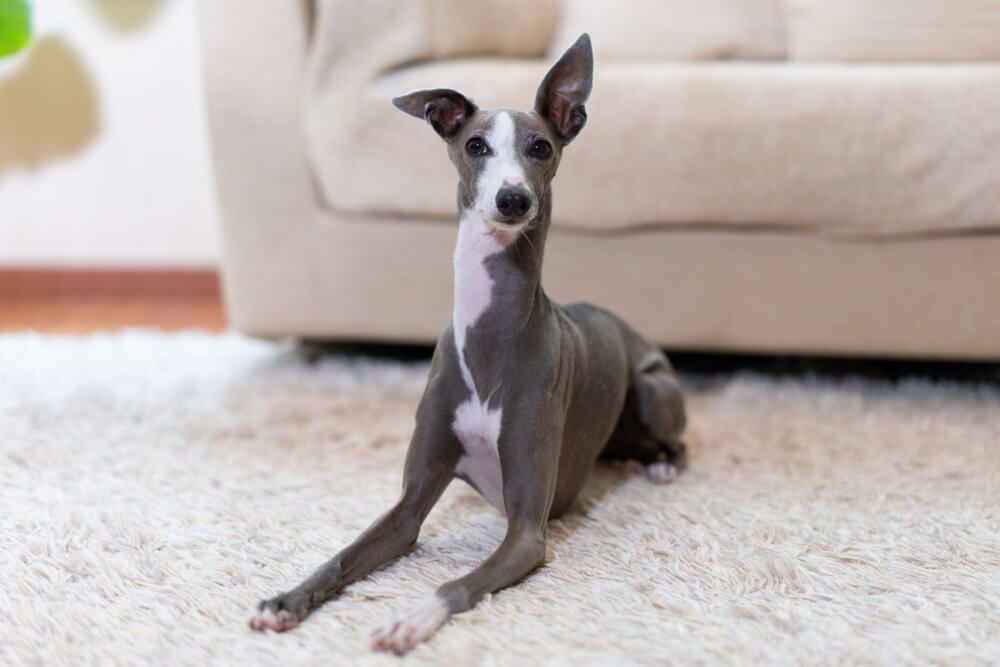
What dog breeds need less exercise?
If you don’t want to spend hours exercising your pup, consider a breed with a more sedentary lifestyle. These breeds come in many sizes, so don’t despair if you are hoping to have a large breed dog. While many dogs who were bred for companionship are small to medium-sized, there are plenty of large breeds who love a less active lifestyle.
However, there are exceptions to every rule, so make sure to consider your dog’s individual needs.
- Cavalier King Charles
- Dachshunds
- French Bulldogs
- Greyhounds
- Great Danes
- Chihuahua
- Brussels Griffon
- Mastiff
- Pugs
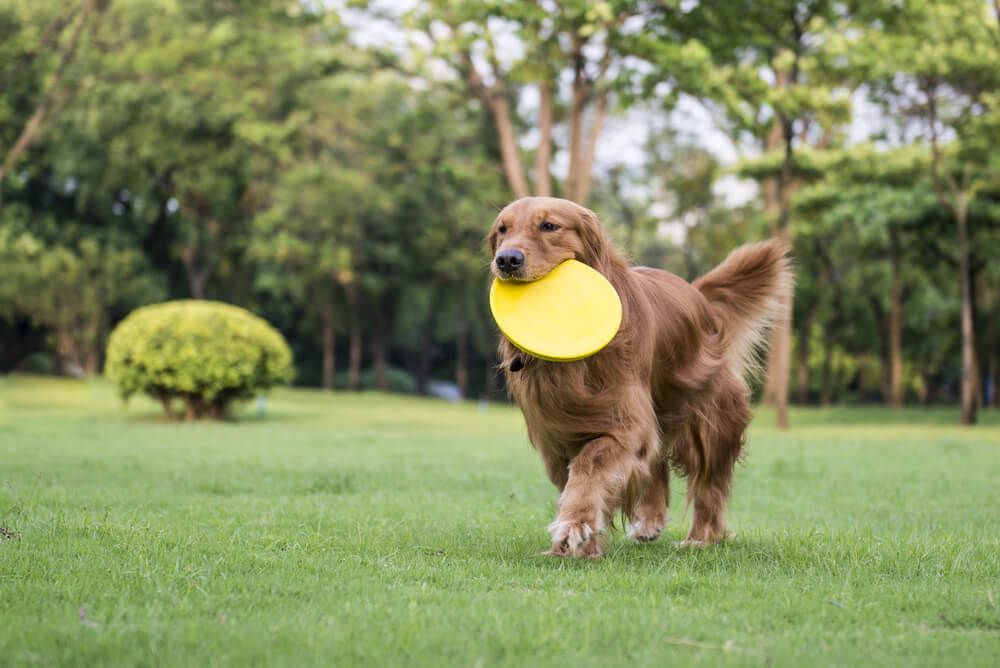
What Else Affects My Dog’s Exercise Needs?
Hot and Cold Weather:
- Avoid Extreme Temperatures: Exercising in hot or cold weather can be dangerous for dogs, resulting in life-threatening heat stroke or hypothermia and frostbite. Avoid these risks by rescheduling your dog’s outdoor activities or exercising indoors.
- Protect Against Paw Injuries: Protect your dog’s paw pads from painful burns. These can be caused by walking on hot surfaces in the summer or on treated sidewalks and roads in the winter. If you must walk on these surfaces, consider using insulated dog boots.
Your Dog’s Health and Fitness:
- Tailor Exercise to Your Dog: Inappropriate exercise can worsen existing health conditions or put your dog at risk for related injuries. Talk to your veterinarian if your dog has heart or respiratory disease, joint problems such as arthritis or hip dysplasia, or is overweight.
- Start With a Veterinary Exam: Before starting a new physical activity, consult with your veterinarian to ensure your dog is fit and healthy enough for exercise
Urban vs. Rural Settings
How and how often you exercise your dog may depend on where you live. Factors such as whether or not you have a yard, a neighborhood to walk in, or access to nearby trails, dog parks, or recreational areas can dictate the type or frequency of your dog’s activities. While rural-dwelling dogs may enjoy greater access to wide open—but safe—spaces, urban dog owners may need to work harder to provide their pups with reliable dog-friendly areas where they can run and play.
What type of exercise is suitable for my pup?
Before you lace up your shoes and leash up your pup, take a moment to ensure your new exercise plan is safe, appropriate, and effective.
Check With Your Vet:
- If it’s been a while since your dog’s last exam, schedule an appointment to ensure they’re healthy enough for exercise. This is especially important for senior and overweight dogs, who are more prone to exercise-related injuries.
Start Slowly:
- Build your dog’s physical fitness gradually to support their health and avoid injury. Walking is a great low-impact way to begin your dog’s fitness journey. The American Veterinary Medical Association recommends starting with short, frequent walks, and incorporating sniff breaks for your pup’s mental well-being.
- Keep things fun and interesting by walking your dog in new places, parks, or green spaces
- Brisk walking is the ultimate goal, but set the pace according to your dog’s comfort and ability.
Consider The Weather:
- Check the forecast and avoid exercising during extreme heat or cold. Drastic temperatures not only make exercise miserable but can put your dog at risk for serious illness or injury.
- Adjust your dog’s exercise based on the outdoor conditions. For example, you may need to walk at dawn or dusk during the summer and midday during the winter. You may also need to change the activity or its intensity when conditions aren’t ideal. It’s better to be safe than sorry.
Care For Your Pup’s Paws:
- Make it a habit to check your dog’s paw pads for irritation or injury. Clip long hair to improve your dog’s grip and trim nails to prevent pain and breakage.
Provide Hydration and Nutrition:
- Always pack for your pup! This includes water and a collapsible dish to ensure your dog stays hydrated, especially during warm weather, and small, healthy, vet-approved treats for training or motivation.
Prioritize Comfort and Safety:
- Pay attention to your dog’s behavior before, during, and after activity. Note any signs of pain or stress, such as panting at rest, slow pace, lack of focus, changes in posture or gait, and refusing to exercise. If you notice these signs, stop exercising and consult your veterinarian.
- Alternate activities to provide novelty and well-rounded fitness. For example, rotate high-energy games and activities with low-impact alternatives like swimming or underwater treadmill walking.
- Educate yourself on potential injuries related to your dog’s sport or activity so that you can play safely, minimize their risks, and notice early warning signs.
Level Up With Advanced Exercises:
- Once you’ve built a strong fitness base, consider challenging your dog with an exciting sport or activity such as jogging, hiking, agility, disc dog, flyball, or dock diving. Consult a knowledgeable trainer who can help you and your dog learn how to perform safely.
I live in a small apartment in the city, how do I keep my dog fit?
Even if you don’t have a big house with a backyard, there are plenty of ways to keep your pup mentally and physically fit! If you live in a city, walking downtown and going with you to run errands can be great mental and physical exercise. Before you head out, make sure everywhere you’re planning to go is dog friendly and that your dog is well behaved on a leash .
You don’t want to take your dog into a pet store and have them knock over a bulk bin of treats or jump on another customer and potentially injure them. While these examples are extreme they do happen, so you want to make sure your dog is ready to go on errands with you without barking, lunging, stealing, or disturbing anyone. If you need help – enlist a qualified trainer to work on these skills with you! In a private lesson, you can work in the real world with distractions like other people and dogs, tasty treats, and common obstacles.
Consider doggie daycare or a dog park
If you work outside of your home or are finding that you don’t have enough time or space to give your dog as much exercise as they need, you aren’t out of luck. Consider doggie daycare or some trips to the dog park. Doggie daycare can be pricier but you have some options. Consider enrolling your dog only a few days a week or for half days. Daycare works best for dogs who need to be social and love to play with other dogs. When choosing a daycare for your pup visit a few and ask lots of questions. Some daycares group dogs based on their size, energy level, or personality. It may take a few tries to find the right group for your pup.
The dog park can be another good option but does come with some risks. Remember to keep a watchful eye on your dog and the other dogs in the park. If you see some tension or play that your dog isn’t enjoying, you can leash up and leave.
Remember to follow all of the rules of the dog park and do not bring toys or food with you as dogs can get territorial about these things. Remember to work on your recall so that you don’t spend too much time fighting with your dog when it is time to go.
Some dog parks have Facebook or other social media groups where you can meet other pet parents and find a good playgroup for your pup.
Indoor activities like puzzle toys, tricks and nose work
While dogs love the great outdoors, there’s plenty of fun to be had inside—even in a small space. Indoor activities are a fun and effective way to help your pup burn off energy by engaging their mind and encouraging natural behaviors such as sniffing, foraging or hunting, and movement.
Trick Training:
Unlike traditional obedience, tricks are fun behaviors that allow dogs and their owners to be creative and silly. Look for free video tutorials and trick training programs online to guide you through basic tricks such as “Shake” and “Spin.” Once you master those, try multi-step tricks such as “Get a soda from the fridge” or “Tidy up your toys.”
Canine Obstacle Course Training:
You don’t need fancy equipment or a lot of space to practice basic agility behaviors—and have a lot of fun! Household items such as broomsticks, hula hoops, couch cushions, and children’s play tunnels can provide safe and stimulating DIY challenges.
Enrichment Toys and Puzzles:
Puzzle toys, snuffle mats, and lick mats encourage dogs to perform specific behaviors or actions to access hidden food or treats. These toys can sharpen your dog’s critical thinking skills, promote healthy digestion, and provide satisfying mental stimulation.
Indoor activities are a great way to satisfy your dog’s physical and mental exercise needs when time or weather prevents outdoor fun. Get creative and keep it fun!
Go on a weekend adventure
If you and your dog have cabin fever, consider taking a dog-friendly weekend adventure. While being a weekend warrior can be a lot of fun, you’ll still need to ensure your dog is receiving appropriate exercise during the week to prevent injuries and fatigue.
If you plan on hiking with your dog, prepare yourselves by practicing longer walks and hill work to build cardiovascular stamina. If your outing involves swimming, check out a dog-friendly pool or canine aquatic center near you. And remember, if you are new to doing these activities with a dog, chat with your vet or qualified trainer before your big adventure.

Diet and exercise—how do you link the two to improve your dog’s overall health?
At Ollie, we take health and nutrition very seriously and have worked with veterinary nutritionists to develop the healthiest Recipes for our pups and yours.
A healthy diet is as important as exercise to your dog’s overall health. If you are starting an exercise program as a result of your pet gaining a few pounds, you may also want to discuss diet with your vet. You want your pup to be getting enough calories to support their needs and give them good energy to exercise.
Cutting too many calories and adding intense exercise will help your pet lose weight, but not in a way that is healthy, sustainable, or enjoyable. (Sound like familiar advice? Most human weight loss programs will tell you the same thing.)
When you set up your account with Ollie, we take you through an onboarding quiz to learn all about your pet. We ask about their breed, weight, activity level, and if they need to gain or lose weight. This data is used to create the best meal plan for your dog.
If at any time your dog’s needs change, just reach out to our Canine Care Team and let us know. We’re here to help when you need us!
The bottom line: Keeping your dog fit and healthy
Keeping your dog happy healthy and in shape is your responsibility. Your dog’s actions and overall health will show you if your dog is getting enough exercise and you may need to make some adjustments. Since your dog can’t always tell you what they need, you may need to work with your vet to decipher their signals.
It is also critically important that you keep up with annual wellness exams as part of your dog’s health and fitness plan. Dogs over 7 years old should see the vet every 6 months. These appointments will let your dog’s doctor keep an eye on everything and catch small problems before they turn into larger ones.
Having a dog can be good for your health for many reasons, hopefully working out with your dog will keep you healthy, fit, and having fun too!
The Ollie blog is devoted to helping pet parents lead healthier lives with their pups. If you want to learn more about our fresh, human-grade food, check out MyOllie.com.
Tagged As:

The nutrition your dog needs,
the food they want.

Enjoying our articles? Subscribe our Newsletters and get new articles directly to your inbox
You might also like
3 July 2025
5 MINS READ
How Fresh Food Can Help Your Dog Have Perfect Poops
As a pup parent, you’re likely very familiar with your dog’s bathroom habits. While it may not be the most glamorous part of taking care of your pup, a dog’s stool can be one of the most dir…
by Ollie Pets
4 June 2025
5 MINS READ
How Can Fresh Dog Food Help with Weight Management?
Maintaining a healthy weight is one of the most important aspects of your dog’s overall health and longevity. Being overweight or underweight can result in health complications and conditions that…
23 May 2025
5 MINS READ
Why Fresh Dog Food Makes Happier, Healthier Dogs That Live Longer
Every pup parent wants their dog to live a long, happy life, and the path to a healthier, happier dog starts with what’s in their bowl. Recent research and expert insights reveal that fresh dog …
by Ollie Pets
